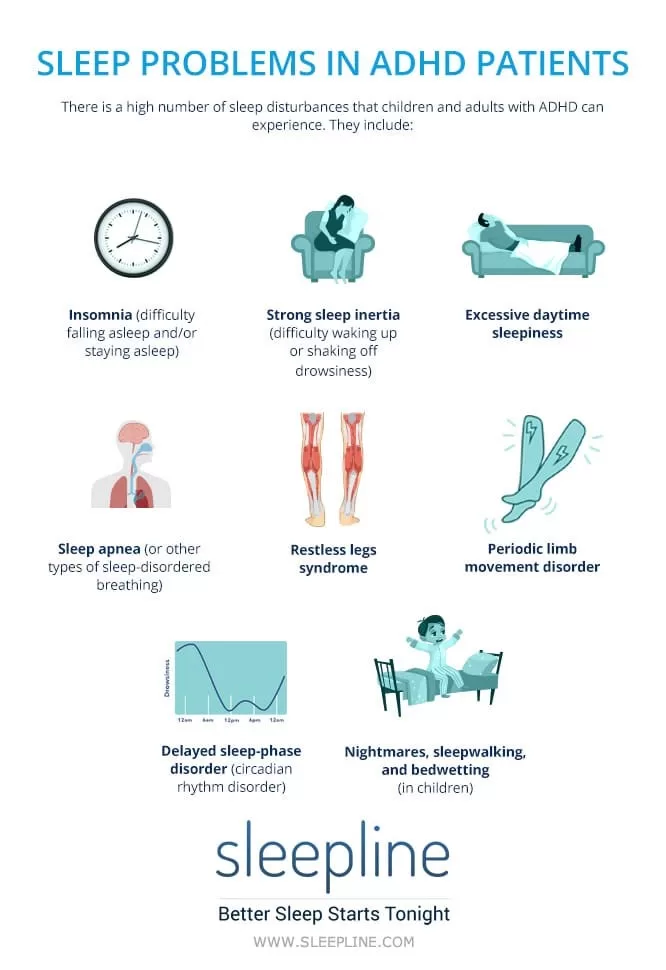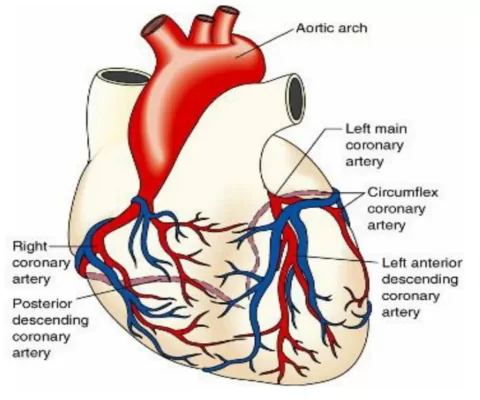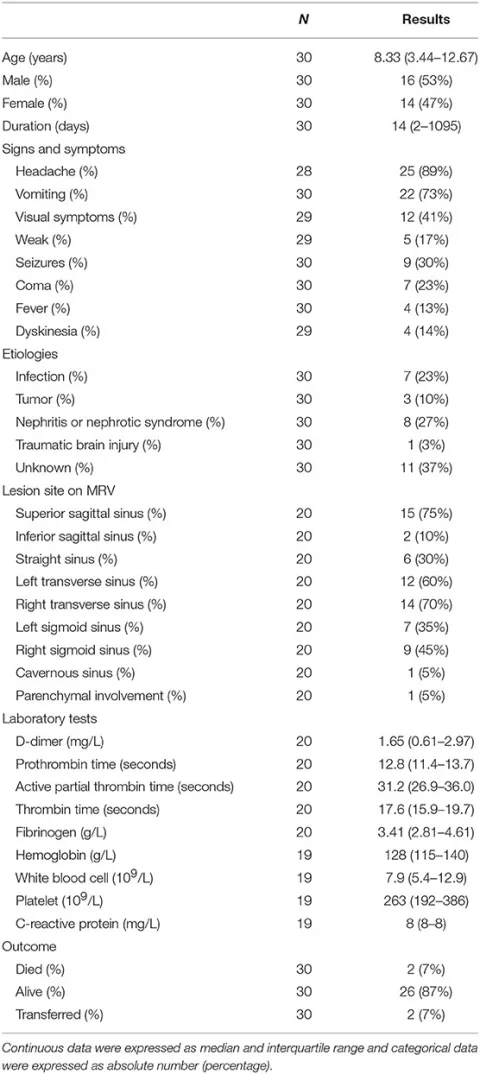Sleep problems and ADHD often go hand in hand, with new research indicating that sleep disturbances in children can serve as a significant warning sign for the development of ADHD symptoms later on. This connection, highlighted in a study published in the European Journal of Pediatrics, reveals that children experiencing sleep issues at ages 8 to 9 are much more likely to show ADHD-like behaviors by ages 10 to 11. Sleep disturbances not only disrupt children’s rest but can also intensify ADHD symptoms such as inattention and hyperactivity, posing additional challenges for affected families. Understanding the link between childhood sleep issues and ADHD is crucial, as it may help in early identification and intervention strategies in children with potential sleep-related behavioral problems. Given that ADHD affects approximately 7.5% of the global child population, addressing sleep behaviors in this context could ultimately improve overall childhood mental health outcomes.
Exploring the interplay between sleep-related difficulties and attention-deficit hyperactivity disorder (ADHD) unveils a complex web affecting young children. Disruptions in sleep patterns can manifest in various ways, often leading to pronounced childhood ADHD symptoms like inattentiveness and excessive activity. The scientific community continues to investigate how these sleep behaviors may influence the prevalence of attention and hyperactivity issues in children. By recognizing and addressing these early sleep disturbances, caregivers may pave the way for better developmental trajectories for children at risk of childhood ADHD. Consequently, fostering awareness about the significance of proper sleep may hold the key to mitigating future behavioral challenges associated with ADHD.
Understanding the Link Between Sleep Problems and ADHD Symptoms
Research indicates a significant association between sleep problems in young children and the subsequent development of ADHD symptoms. According to the study published in the European Journal of Pediatrics, children aged 8 to 9 who experience sleep disturbances are more susceptible to exhibiting ADHD symptoms as they reach 10 to 11 years of age. This finding emphasizes the importance of recognizing sleep behaviors as potential indicators of future ADHD risks, suggesting that early intervention may play a critical role in mitigating developmental challenges.
ADHD, characterized by inattention, hyperactivity, and impulsivity, can profoundly affect a child’s educational and social outcomes. Children with sleep disturbances can exhibit similar symptoms, making it challenging to differentiate between true ADHD and sleep-related behavioral issues. Understanding this link not only helps in identifying at-risk children but also opens avenues for interventions that target improving sleep patterns in order to potentially reduce the onset or severity of ADHD symptoms.
The Role of Sleep Disruptions in Childhood ADHD Development
Children with sleep disturbances, such as trouble falling asleep or frequent waking, demonstrated a notably increased likelihood of developing inattention and hyperactivity symptoms later on. The recent cohort study revealed that those children who faced sleep challenges at ages 8 to 9 were 14% more likely to develop oppositional behaviors, 20% more likely to be inattentive, and 18% more likely to become hyperactive by the age of 11. These statistics underscore the critical role that sleep plays in a child’s neurological and psychological development.
Moreover, the findings from the study indicate that sleep disruptions may not merely be a consequence of ADHD but could serve as a precursor to its development. This revelation shifts the perspective of treatment and investigation strategies, suggesting that focusing on enhancing sleep quality in early childhood may serve as a proactive measure against the manifestation of ADHD symptoms.
Implications for Screening and Early Intervention in Children
Given the demonstrated connection between sleep problems and ADHD symptoms, implementing routine screening for sleep disorders in pediatric consultations could have significant benefits. As emphasized by researcher Llúcia González, simple questionnaires could effectively identify children at-risk of developing ADHD symptoms, thus facilitating early intervention strategies. This approach fosters an environment where proactive measures can be taken to improve children’s sleep behaviors, which may simultaneously reduce the risk of ADHD.
Incorporating sleep assessments into standard pediatric health protocols could not only help identify at-risk children but also empower parents with strategies to improve their child’s sleep hygiene. Addressing sleep issues before they escalate may aid in enhancing overall childhood development and resilience against behavioral disorders like ADHD, hence improving long-term outcomes for affected children.
Impact of Socioeconomic Factors on Sleep and ADHD Symptoms
The study findings suggest that socioeconomic status may influence the link between sleep problems and ADHD symptoms. For instance, children from families with employed fathers exhibited a stronger correlation between poor sleep and later ADHD symptoms compared to those from families with unemployed fathers. This connection highlights the potential role of socioeconomic pressures in children’s health outcomes, indicating that support structures in families can affect sleep behaviors and subsequent ADHD risks.
This insight opens discussions about the need for holistic approaches when addressing ADHD and sleep disturbances, emphasizing that interventions should also consider family dynamics and socioeconomic circumstances. Tailoring strategies and resources to assist families could not only alleviate sleep issues but also create supportive environments for children to thrive, potentially lowering the incidence of ADHD symptoms.
Limitations of Current Research on Sleep and ADHD
While the findings of the recent study shed light on the relationship between sleep problems and ADHD development, it is important to acknowledge its limitations. The reliance on parent-reported questionnaires introduces subjectivity into the data collection process. Parents may have varying interpretations of their child’s sleep patterns and ADHD symptoms, potentially leading to response bias that can influence findings.
Additionally, the absence of objective measurements of sleep quality, such as the use of actigraphy or polysomnography, points to a gap in fully understanding the nuances of sleep disturbances. Future studies that incorporate more precise, objective sleep assessments could yield additional insights into how sleep impacts ADHD, making a stronger case for interventions aimed at improving sleep health in young children.
Future Directions in Research on Sleep and ADHD
The dynamic relationship between sleep disturbances and ADHD underscores the need for further research in this domain. Future studies should aim to explore underlying biological mechanisms and long-term effects of early sleep issues on attention, impulse control, and social functioning. By employing longitudinal designs that assess sleep quality alongside behavioral assessments, researchers can develop a more comprehensive understanding of how sleep influences ADHD symptoms through different developmental stages.
Moreover, investigating intervention strategies aimed at improving sleep quality in children could illuminate whether enhancing sleep might effectively prevent or minimize the severity of ADHD symptoms. By addressing sleep issues early, researchers may identify a vital pathway to improve overall childhood mental health and development, thereby reducing the burden of ADHD on individuals and society.
The Necessity of Awareness and Education on Sleep Issues
Raising awareness about the importance of sleep in childhood development is essential. Parents, educators, and healthcare professionals must be educated on the signs of sleep disturbances and their potential impact on behaviors typically associated with ADHD. Early recognition can lead to timely interventions that target both sleep improvement and behavioral support, creating an integrative approach to managing children’s health.
Educational programs that inform families about sleep hygiene—such as establishing consistent bedtime routines, minimizing screen time before bed, and creating conducive sleep environments—are crucial. Empowering parents with knowledge can lead to proactive measures that not only enhance children’s sleep but may also minimize future risks of developing ADHD symptoms and promote healthier growth trajectories.
Strategies for Improving Sleep Behaviors in Children
To combat childhood sleep problems and their potential contribution to ADHD development, effective strategies must be implemented. These include establishing a consistent bedtime routine that includes winding down activities, ensuring a dark and quiet sleep environment, and limiting stimulants like caffeine in the evening. Encouraging regular physical activity during the day can also significantly improve sleep quality, leading to better overall behavioral health.
Additionally, involving children in discussions about sleep and its importance can foster healthy sleep habits early. Teaching children relaxation techniques, such as deep breathing exercises or mindfulness practices before bedtime, can empower them to take charge of their sleep health. An emphasis on sleep as a crucial aspect of their overall well-being may encourage them to prioritize good sleep hygiene, ultimately reducing the likelihood of developing ADHD symptoms.
Conclusions: The Critical Role of Sleep in Childhood Development
The intricate connection between sleep problems and the emergence of ADHD symptoms highlights the critical role of sleep in childhood development. As research continues to unveil how sleep disturbances may predict developmental challenges, it becomes increasingly evident that sleep should be treated not just as a matter of comfort, but as a significant component of mental health. Understanding and addressing children’s sleep issues early on could be key to reducing rates of ADHD and fostering healthier, more resilient young individuals.
Ultimately, the evidence beckons a shift in focus towards proactive measures for monitoring sleep behaviors among children, advancing both public health initiatives and clinical practices. By prioritizing research, education, and intervention strategies centered around sleep, we can enhance not only the quality of sleep in children but also their overall developmental outcomes, ensuring a brighter future for our youth.
Frequently Asked Questions
What sleep problems are commonly associated with ADHD symptoms in children?
Children with ADHD often exhibit various sleep disturbances, including difficulty falling asleep, frequent night awakenings, and altered sleep duration. Research indicates that these sleep problems can be indicative of future ADHD symptoms, particularly inattention and hyperactivity.
How do sleep disturbances impact children with ADHD symptoms?
Sleep disturbances significantly influence ADHD symptoms. A study found that children experiencing sleep issues at ages 8 to 9 were more likely to show signs of ADHD, such as inattention and hyperactivity, by ages 10 to 11, suggesting that early sleep problems may contribute to the development of ADHD symptoms.
Can sleep problems predict future ADHD symptoms in childhood?
Yes, recent research suggests that sleep problems in children aged 8 to 9 can predict the emergence of ADHD symptoms by ages 10 to 11. This indicates a potential link between sleep disturbances and the later development of ADHD.
What role do socioeconomic factors play in the relationship between sleep problems and ADHD symptoms?
Socioeconomic factors can influence the relationship between sleep problems and ADHD symptoms. For instance, the study indicated that children whose fathers were employed showed a stronger association between sleep disturbances and ADHD symptoms, highlighting the complex interplay between social factors and childhood ADHD.
Are parental reports of sleep problems a reliable measure for predicting ADHD symptoms?
While parental reports, such as those from validated questionnaires, are commonly used to assess sleep problems and ADHD symptoms, they can be subjective. Factors like parental stress may influence these reports, which suggests a need for more objective sleep measurements in research.
What can parents do to identify sleep issues that may lead to ADHD symptoms in their children?
Parents can monitor their children’s sleep behaviors, such as difficulty falling asleep or frequent waking. Using questionnaires designed for pediatric consultations may help identify sleep problems early, potentially mitigating the risk of future ADHD symptoms.
How prevalent are sleep disturbances among children with ADHD?
Sleep disturbances are prevalent among children with ADHD, impacting their overall health and behavior. Studies have indicated a significant number of children with ADHD report sleep-related issues, which can exacerbate their symptoms.
What interventions might help reduce sleep problems in children at risk of ADHD symptoms?
Interventions that promote healthy sleep habits, such as establishing consistent bedtime routines or addressing environmental factors, may help reduce sleep problems. Future research is exploring whether improving sleep at an early age could lower the risk of developing ADHD symptoms.
What should be done if a child shows both sleep problems and signs of ADHD?
If a child exhibits both sleep problems and signs of ADHD, it’s important for parents to consult with a pediatric healthcare provider. Early assessment and intervention can help address these issues and may prevent the development of more severe ADHD symptoms.
What are the implications of the study linking sleep problems to childhood ADHD symptoms?
The study suggests that addressing sleep problems early could potentially mitigate the risk of developing ADHD symptoms in children. It underscores the importance of integrating sleep assessments into pediatric care to identify at-risk children.
| Key Points |
|---|
| New research indicates sleep problems in young children may signal potential ADHD development later. |
| Sleep disturbances at ages 8-9 increase likelihood of ADHD symptoms by ages 10-11. |
| ADHD is a common neurodevelopmental disorder affecting approximately 7.5% of children. |
| The study utilized data from the INMA Project, analyzing 1,244 children’s sleep and ADHD symptoms. |
| Higher scores on sleep problems correlated with significant increases in ADHD symptoms. |
| Social factors, like parental employment, affect the relationship between sleep problems and ADHD. |
| Findings suggest early intervention for sleep problems might mitigate future ADHD symptoms. |
Summary
Sleep problems and ADHD are intricately linked, as highlighted by recent research showing that disturbances in sleep during early childhood can predict the emergence of ADHD symptoms. Understanding this connection is vital for early intervention strategies that may help mitigate behavioral issues associated with ADHD. Recognizing sleep disturbances as potential markers for ADHD offers a pathway for proactive management and support for children facing these challenges.
The content provided on this blog (e.g., symptom descriptions, health tips, or general advice) is for informational purposes only and is not a substitute for professional medical advice, diagnosis, or treatment. Always seek the guidance of your physician or other qualified healthcare provider with any questions you may have regarding a medical condition. Never disregard professional medical advice or delay seeking it because of something you have read on this website. If you believe you may have a medical emergency, call your doctor or emergency services immediately. Reliance on any information provided by this blog is solely at your own risk.








